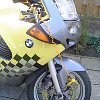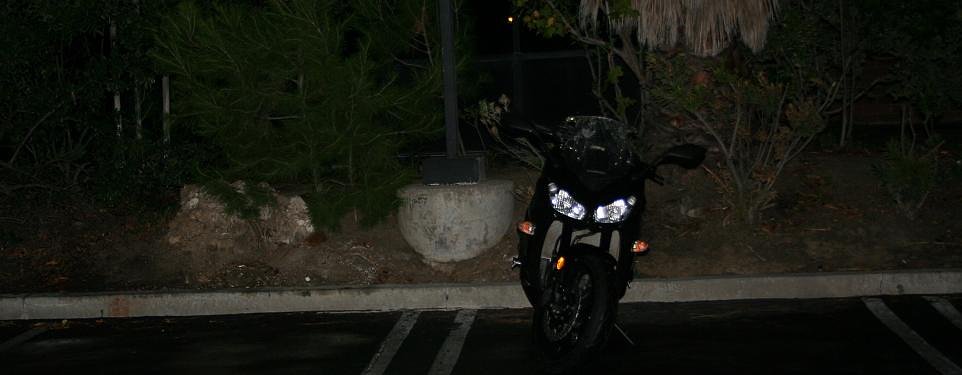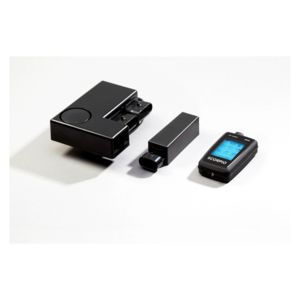Recently, Lemmy wrote a little piece about how, in his opinion, the fork lock is the most useless part on a motorcycle. And he’s got a point.
Plenty of fork locks have been overpowered by thieves. Seconds later, those bikes might be gone. This is why many motorcyclists use additional security gear to protect their rides.
There are a few different ways to protect your motorcycle from theft, and any one of them is better than leaving the bike unprotected. Combining multiple protection methods increases your chances of avoiding theft, but the old axiom remains: “If they want it badly enough, they will get it.” The good news? With a few simple security tools, you can make your motorcycle a lot less appealing to thieves.
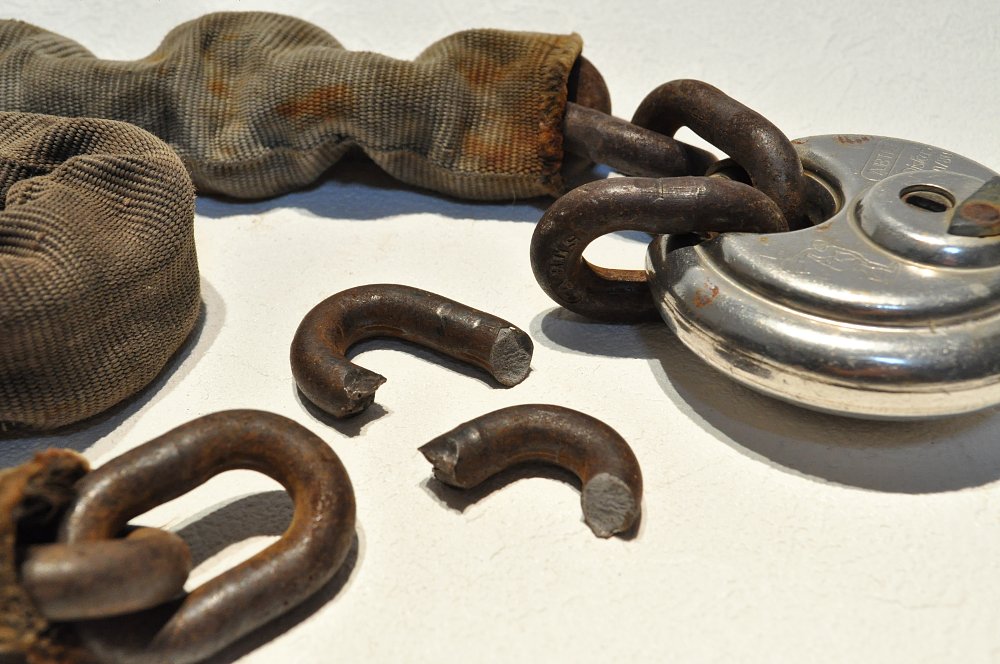
You’ll also protect your bike from people other than thieves. Occasionally, morons sit on motorcycles they don’t own, let their kids sit on them, move motorcycles around to get a better parking spot, or simply vandalize them. A few security measures will stop these chumps in their tracks.
If you choose to use any of these security devices, it might be a good idea to check with your insurance provider to see if you can get a discount on your premiums. I can’t think of a better endorsement for moto security than the fact that insurance companies sometimes see your bike as less of a risk with them installed! For example, the discounts from using my disc lock have already paid for the lock itself.
$0 security
The first lines of defense are common sense and general awareness. They’re free! Riding to a rally in a city where theft is common, you’re going to want to think carefully about your parking situation. A rash of garage break-ins strikes your suburb, with thieves targeting sport bikes? Maybe start using that ground anchor again when parking the Ducati. It’s little things, too. At the risk of sounding too obvious, don’t leave your keys in your bike’s ignition or store a spare key on the bike in an easily found spot. Make sure your garage, if you’re lucky enough to have one, is actually locked up for the night. Prefer well lit, high-traffic areas when parking, especially if they have cameras or a nice line of sight to wherever you’ll be. Why make a thief’s job easier?
And one last thing: If you suspect an attempted theft of your motorcycle, move it to a more secure location as soon as possible. They might be back to retrieve your immobilized machine.
Your motorcycle isn’t the only thing that can be stolen. Be careful with easily removable accessories. That RAM mount comes off in seconds, and so do your saddlebags if they don't use a lock. Helmet theft is also a very real possibility.
Preventative security
Common sense and general awareness are great, but the basics will only get you so far. Get serious with some preventative security. These are the tools you use to prevent theft by making your motorcycle as annoying to steal as possible. Covers, locks, chains, alarms, and more will hopefully send thieves looking for an easier target.
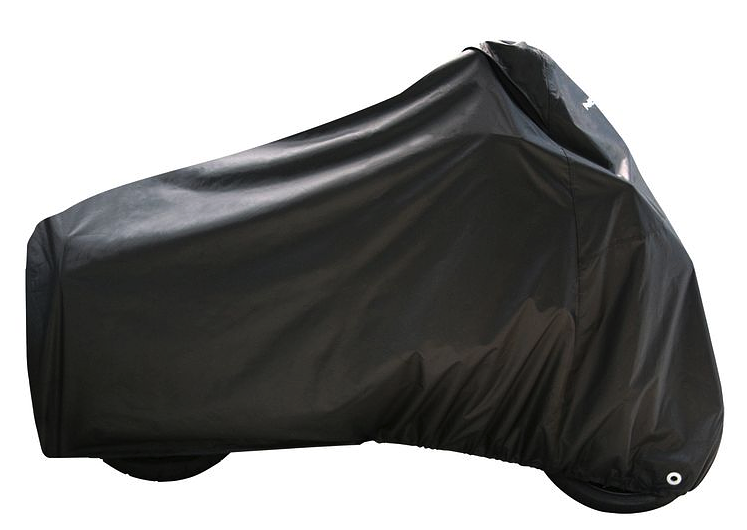
Motorcycle covers
An easy security upgrade is a motorcycle cover. It’s a multi-benefit upgrade, too. In addition to keeping your motorcycle dry and clean, a good bike cover obscures your motorcycle from view. The casual bikenapper doesn’t know what’s under there, especially if the cover is long enough to hide the wheels. It's worth mentioning that a plain cover suggests a plain motorcycle. Why advertise that you're parking a BMW with a BMW-branded cover?
I can personally attest to the benefit of covers. I had to park my Suzuki DR-Z250 in a location visible from the street for a few weeks, and I hated the amount of attention it received from strangers. “Do you fix dirt bikes?" "What year is that?" "How much for the bike?” After throwing a cover over it, nobody has asked about my bike since. Problem solved. If you want to improve the odds that your cover stays put, get a cover lock. Many moto covers have grommeted holes towards the bottom for this purpose.
Let’s say our enterprising thief is a real go-getter, and a quick peek under the cover reveals a bike worth stealing. Now what? It’s time for immobilization measures.
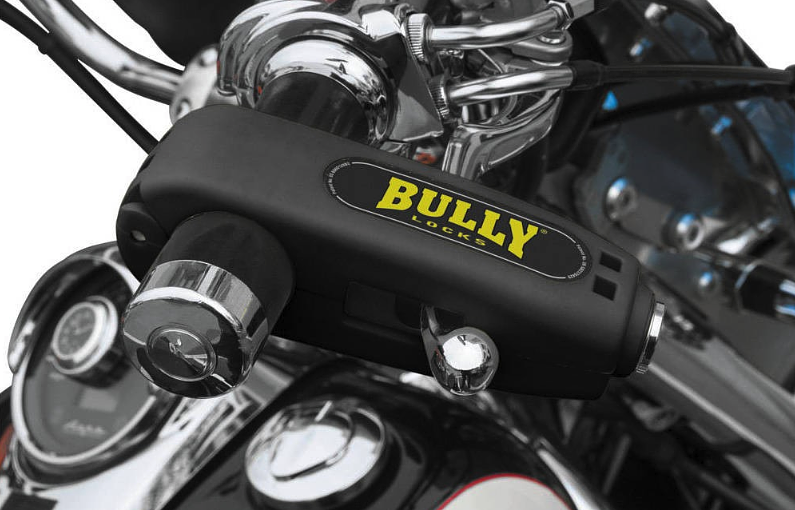
Brake lever locks
A clever little device is the brake lever lock, also called a grip lock. These units attach to your motorcycle’s front brake lever, clamping the front brake and preventing the motorcycle from rolling. Lock it with a key, and you’re all set. While brake lever locks can certainly be defeated, they are one more obstacle to stealing a motorcycle, and they prevent less nefarious folk from easily rolling your bike around. An added bonus is that they’re very compact and light for a security device. They fit just about any motorcycle. Some also feature alarms, another nice deterrent.
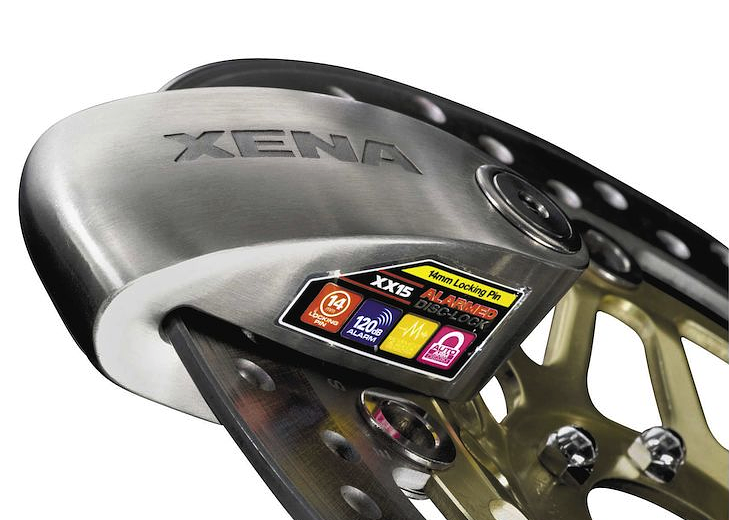
Disc locks
A step up from the brake lever lock is the disc lock. These devices pass through your brake disc so that the disc can’t spin around without the lock hitting the caliper. They fit most modern motorcycles with disc brakes. (Some disc locks may not fit older disc brakes, especially wide, undrilled fare from the 1970s and 1980s. A U-style lock through the disc serves the same basic function. U-locks can also pass through the rear sprocket to immobilize your motorcycle.)

Disc locks are usually sturdier than brake lever locks. Of course, they can be defeated with the right tools of persuasion. But like the lever lock, they take up very little space and often come with alarms. They also might come with a cord connecting the lock to the handlebar to remind you that your disc can’t spin, and that you’ll seriously embarrass yourself if you forget to take it off before riding away.

Chains
Motorcycle security chains are a very popular option for deterring theft. It’s widely accepted that a chain is most effective when looped through the motorcycle’s frame. Ideally, the chain also loops around a sturdy anchor, with a good lock to tie it all together. While a chain around a wheel is better than nothing, wheels are removable! Thieves are unlikely to cut your frame to get a chain off. This forces them to attack either the chain itself, the lock, or the anchor. A sturdy chain and mounting point will buy you some time. A steel cable, closely related to the chain, serves the same basic function. If you don't have a good anchor spot, lock your motorcycle to a buddy's bike if you're riding together.
In addition to being annoying hunks of metal, chains can have some other tricks up their sleeves. One possibility is, in fact, a sleeve made of tough fabric. This is intended to slow down bolt cutters and other criminal classics, since they’ll struggle to bite through to the steel they were designed to cut. Chain locks often feature pick-resistant keyways or alarms. This all comes at the price of added bulk.
Combined with locks and covers, chains round out an essential trinity of protection when you’re away from home.
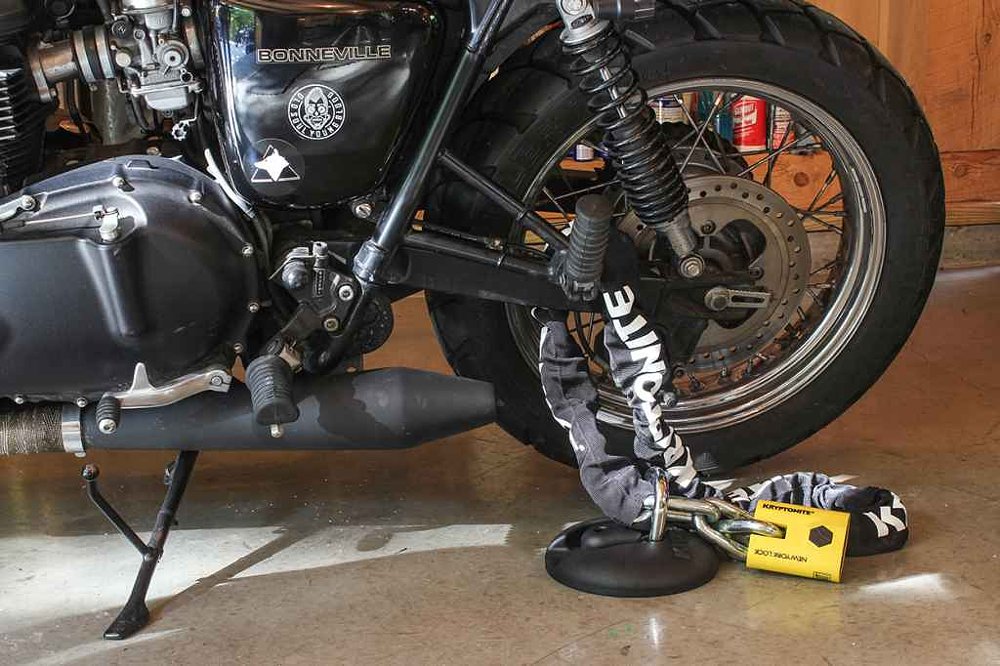
Ground anchors
Chains are only as good as their weakest link. A motorcycle secured to, say, a chain link fence won’t stay there long. Ground anchors are a great solution for beefing up your chain mount options, at least at your regular parking spot. A ground anchor’s strength comes from bolts that reach under the street or garage floor. Pass the chain through the anchor, and you shouldn’t have to worry about that end of the chain going anywhere. Only install ground anchors on property you own, or with permission. By design, they’re not easy to remove.
Garages
A garage, if you’re lucky enough to have one, can be your own personal fortress with a little work. Make sure all doors and windows are actually secure and lockable. Automatic garage door openers can be fooled. A secondary lock might be necessary. Don’t leave keys in an accessible place, and don’t stop using a cover even when your bike is parked inside. In addition to keeping your motorcycle clean, a cover hides your bike’s identity from prying eyes. Is an unknown motorcycle worth the risk of breaking and entering? Especially when there’s another bike, uncovered, parked by the curb a block away? Probably not. Add some cameras for good measure.
Post-theft security
Any protective device can be defeated. They’re really only there to slow the scumbags down. If someone gets past your preventative security, your options are pretty limited, unless you’ve installed some post-theft security.
Immobilizers, GPS trackers, and other post-theft gadgetry
The fastest way to remove a motorcycle from the scene of the crime is to ride it away. Beats pushing! And motorcycles are usually a lot faster than a van or truck, though some grab-and-drive theft does occur.
Ignition switches can be bypassed in a number of ways, so what happens after that? An old trick is to hide a secret, second ignition switch somewhere on the motorcycle. There are plenty of tutorials out there for how to add these, and it’s not too difficult on an older bike. After all, a motorcycle with a screwdriver hammered into the ignition is better than no motorcycle at all. And you get a free screwdriver.
Moving to a more advanced approach, a GPS tracker is an easy upgrade for peace of mind. Wire it up, hide it away, and you can access your bike’s location as long as the unit can get signal. Fancier units can emit alarms, detect motion around the bike, and even cut the ignition. Joyride over. Post-theft tools are the best investments for the worst-case scenario.
Motorcycle theft is an ugly reality that we have to deal with. (Don’t ever ask Joe Zito what should happen to bike thieves if you’re squeamish.) Putting all these locks and covers and alarms on our bikes is a hassle, but the ride is worth it. Stay disciplined, stay aware, and if you really can’t handle it anymore, move to Vermont because pretty much nobody steals bikes there.









